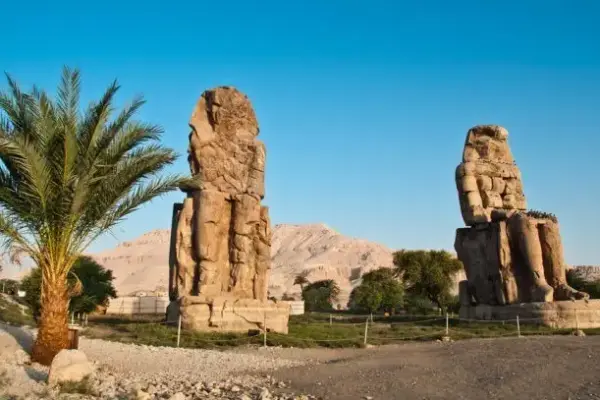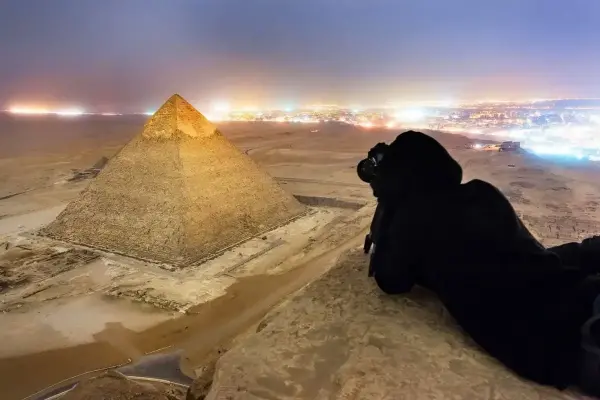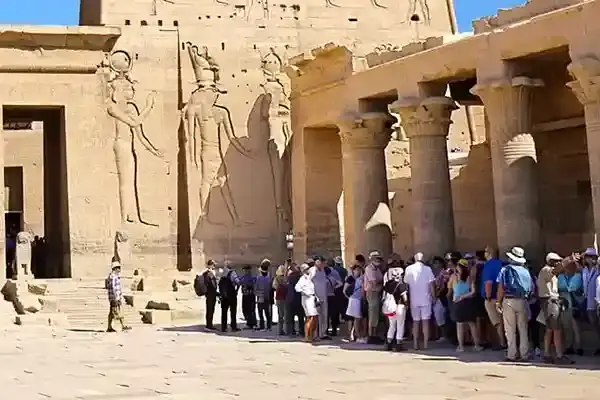Table of contents [Show]
Colossi of Memnon: A Brief History
Colossi of Memnon statue is located in the ancient city of Thebes, the Colossi of Memnon are two statues of the Egyptian Pharaoh Amenhotep III. For centuries, they have stood in silence, gazing out over the Nile River. But despite their imposing size and history, little is known about them today. In this blog post, we will take a look at the brief history of the Colossi of Memnon. We will explore how they were built, what they meant to the people of ancient Egypt, how they have been preserved throughout the centuries, and to what degree is important among the Egypt tours .
The Colossi of Memnon in Antiquity
The Colossi of Memnon are two massive stone statues of the ancient Egyptian pharaoh Amenhotep III, who reigned during the Eighteenth Dynasty of Egypt. The statues were erected in the Theban Necropolis in Luxor (ancient Thebes), at the entrance to Amenhotep III's mortuary temple, which was known as the "Temple of Millions of Years" (or sometimes the "Temple of Memorium"). It will be your loss if you don't visit them as part of your day tours in Luxor
The name "Colossi of Memnon" is derived from Greek antiquity when the statues were mistakenly thought to depict the Homeric hero Memnon, son of Zeus and Eos. In reality, they depict Amenhotep III in a seated position, facing east towards the Nile and looking out over his kingdom. They are made from sandstone which was quarried at nearby Gebel el-Asr. Listen to the full story from our expert guides that will accompany you on your chosen Egypt classic tours .
Each statue is 19 meters (62 ft) high and weighs approximately 700 tons. They originally flanked the entrance to Amenhotep III's mortuary temple, but only one statue now remains in its original location; Ramesses II moved the other to stand beside his own temple complex in Memphis, Egypt .

The Revival of the Colossi in Modern Times
In antiquated times, the Colossi of Memnon were two monstrous stone sculptures of the Egyptian pharaoh Amenhotep III, who administered from 1391-1353 BCE. The sculptures remained in the Theban Necropolis on the west bank of the Nile River in advanced Luxor, Egypt. For quite a long time, they were the biggest known figures on the planet and stayed remaining until they were overturned by a seismic tremor in 27 BCE.
The Colossi lay in ruins for north of 1,000 years until they were rediscovered by European explorers in the mid nineteenth century CE. Yet again from that point forward, they have gone through various rebuilding endeavors and are presently one of the most famous vacation destinations in Egypt and the first class in Egypt luxury tours .

The Significance of the Colossi Today
The Colossi of Memnon are two massive stone statues of the Egyptian Pharaoh Amenhotep III, who ruled from 1386-1353 BCE. The statues were originally placed at the entrance to the Temple of Amenhotep III at Luxor but were later moved to their current location in the 18th century CE. Today, they remain a popular tourist destination to visit in our classic tours in Luxor and Cairo , a symbol of ancient Egyptian culture, and a must-see attraction to include on the Egypt day trips list.
The Colossi of Memnon are significant not only for their size and age but also for their history and symbolism. As the largest monolithic statues in Egypt, they attest to the skill of ancient Egyptian sculptors and engineers. They also represent one of the few surviving examples of art from the reign of Amenhotep III, which was a period of great prosperity and cultural achievement in Egypt. Don't hesitate to join our luxury package to Luxor and Cairo .
The Colossi are also significant as a symbol of Egyptian resilience. Despite being damaged by earthquakes and time, they have stood tall for over 3000 years and continue to awe visitors from all over the world to see their greatness with the guided Egypt tour packages . In a way, they embody the spirit of Egypt itself, a country with a long history and rich culture that has withstands the test of time.
The Colossi of Memnon have stood in Thebes for over 3,400 years and are some of the most iconic monuments of Ancient Egypt you can see them by booking a hot air balloon tour in Luxor to pass beside these giant statues. Although they are now in a state of ruin, they still stand as a testament to the skill and artistry of the Ancient Egyptian civilization. If you ever find yourself in Thebes, be sure to take the time to see these incredible statues for yourself on Luxor west bank tour .
Popular Categories
Related tours
Cairo, Aswan, and Luxor
-
Starting From
$ 2,850
-
Type
Package
Cairo, Aswan, and Luxor
-
Starting From
$ 1,600
-
Type
Package
Cairo, Aswan, and Luxor
-
Starting From
$ 1,850
-
Type
Package











